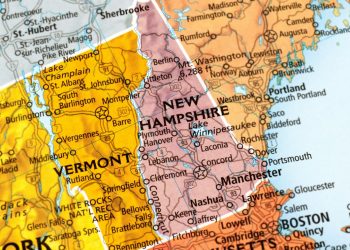Realizing the American Dream of homeownership is something that most aspire to nationwide. Some have succeeded, while others haven’t, but it has proven that Black consumers have a more challenging time making their ownership dreams a reality.
That’s been evident in the persisting gap in ownership rates between Black and white homeowners, which a new report highlights as it dives into 60 years of data depicting the widening gap despite cultural and social improvements during that time period.
The homeownership gap widened by more than two percentage points since 1960, with most of that change occurring between 2010 and 2021 when the gap grew by 1.5 percentage points.
The gap expanded from 27% in 1960 to slightly higher than 27.7% in 1994. By July 2022, the gap had grown to 29.4%.
“The national gap between Black and white homeownership rates is an important gauge of how we, as a country, have progressed toward the goals of equitable access to homeownership,” wrote Shadi Bushra, who authored the report by Today’s Homeowner. “By that measure, we have backtracked in terms of equality between Black and white families.”
Most cities (98%) still have a gap between Black and white homeownership, with the most prominent gaps in Arden-Arcade, California; Mesa, Arizona; Bethlehem, Pennsylvania; Torrance, California; and Rochester, Minnesota.
According to the report, 35 states saw their gaps grow in the past decade, with several seeing double-digit growth. Only 15 states managed to narrow their gap in the same period.
States in the South had some of the narrowest gaps, including South Carolina, Georgia and Alabama. D.C. has the smallest gap between Black and white homeownership rates at about half of the national average.
Midwestern states had the most noticeable gaps, with North Dakota, South Dakota, Minnesota and Wisconsin having some of the widest gaps in 2021. However, both Minnesota and South Dakota have improved their gaps since 2010.
According to the report, some states have begun to find ways to narrow their homeownership gaps.
The Rocky Mountain region showed the most progress on this front, with the top three states all hailing from that part of the country. Idaho leads the way, with a 21% decrease in its Black-white homeownership gap between 2010 and 2021. That was mainly due to the state nearly tripling its Black homeownership rate during that period.
Montana and Wyoming followed as the second and third top states that showed notable progress, respectively. Montana shrank its gap by 19.2% in the same period, while Wyoming saw its gap drop from 31% to 19.9%. Minnesota and South Dakota rounded out the five best-performing states with decreases of 6 and 4.8 percentage points, respectively.
The growth in the gap in the past decade can be traced back to the Great Recession, according to industry pundits who agree that Black homeowners are more vulnerable to economic shocks.
“Even taking the long view, it has been remarkably stable despite different civil rights legislation and cultural progress,” Bushra says, noting that the gap hovered around a 30 percentage point difference between white and Black homeownership for decades.
“The Great Recession had many knock-on effects,” Bushra explains. “First off, Black homeowners lost their homes because they were the victims of those predatory lending practices that triggered the subprime mortgage crisis.”
Bushra also notes that more Black people opted to rent instead of buying a home or attempting to secure a mortgage and failed because lenders overcorrected their requirements following the market crash.
According to Mechele Dickerson, law professor at the University of Texas at Austin School of Law, the result was that many Black homeowners lost everything when the housing market crashed.
“We lost generations of wealth because of the Great Recession, and we still haven’t recovered that wealth,” she said in a recent interview with MarketWatch discussing the growth of the homeownership gap.
Amid the decade-long lull, however, there was some rebound as the pandemic-fueled housing market frenzy and historically low mortgage rates helped lower the barrier to homeownership across the board.
Homeownership rates peaked for Black and white Americans in early 2020, but fell after the pandemic. While the overall and white homeownership rates dropped slightly and stabilized in the following months, the Black homeownership rate fell further and experienced more volatility.
Based on Bushra’s report, the Black homeownership rate has shown a downward trend for the first half of 2022, hitting 45.2% in the third quarter of 2022—the latest data featured in the report.
Not only is that below the 46.6% coming out of the 2008 and 2009 market crash, but it’s also a sizable drop from the pandemic-induced peak in homeownership across the board in the U.S.
Despite improvements in Black Homeownership rates, Dickerson stressed that there is still room to grow since the numbers are still low.
“Black homeownership rates did indeed increase between 2019 and 2021, which is great news, but they still aren’t at 50%,” Dickerson says. “Black homeownership rates have never been 50%, so they are better, but better relative to what?”
Dickerson also stated, “They are better than they were in 2019, but still not where we need them to be, and also, the white homeownership rates, even though the growth was smaller for whites between 2019 and 2021, they still own homes at significantly higher rates than Blacks.”
Though the disparity has persisted over the decades, policymakers and industry stakeholders have tried to remedy the issue in several ways.
“Although discriminatory laws have been banned, the data from our study shows that we still haven’t figured out how to close the gap between Black and white homeowners,” Bushra wrote. “In order to do so, we need to be as intentional in tearing down the barriers to homeownership as our forebears were in putting them up.”
The worsening affordability crisis in the housing market has contributed to the disparity, according to experts from the National Association of REALTORS® (NAR).
“Honestly, the last year has been incredibly difficult for housing affordability, and we know that traditionally, Black homebuyers have a harder time saving for a down payment, often having to tap their 401Ks or retirement savings to pull together that down payment and have less ability to have intergenerational transfers of wealth that white homebuyers may be able to rely on,” says Jessica Lautz, vice president of demographics and behavioral insights at NAR.
There have been efforts to lower barriers to financing for aspiring homeowners in the Black community, including targeted down payment assistance programs and Special Credit Purpose Programs (loans focused on economically disadvantaged groups) among institutions like Bank of America. Fannie Mae and Freddie Mac are expected to launch pilot programs this year.
At the same time, Lautz highlights several initiatives that NAR has set up to help REALTORS® learn how to better serve minority consumers and get them on the path to realizing their homeownership dreams.
“It’s up to all of us within the profession to think about this as an issue, and I think the first step is education and knowledge about the issue,” Lautz says. “Then the second step is figuring out what we can do about the issue, and with education comes the knowledge that Black homebuyers are more likely to be first-time homebuyers and need to finance their down payment from other sources than housing equity.”
Understanding and effectively locating and promoting low down payment programs or other options for first-time homebuyers to take advantage of is vital. That includes providing information on VA loans or FHA loans, Lautz says.












